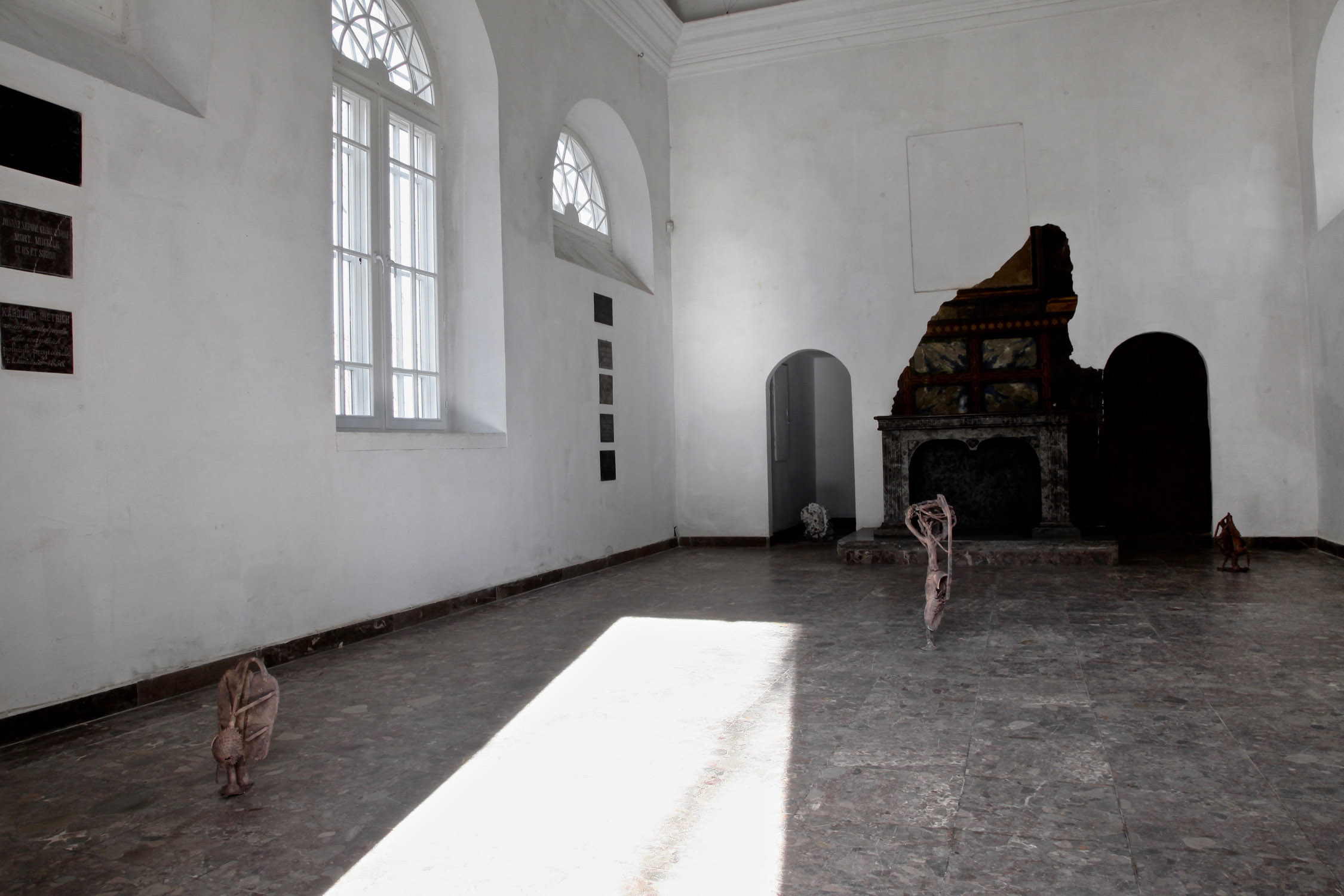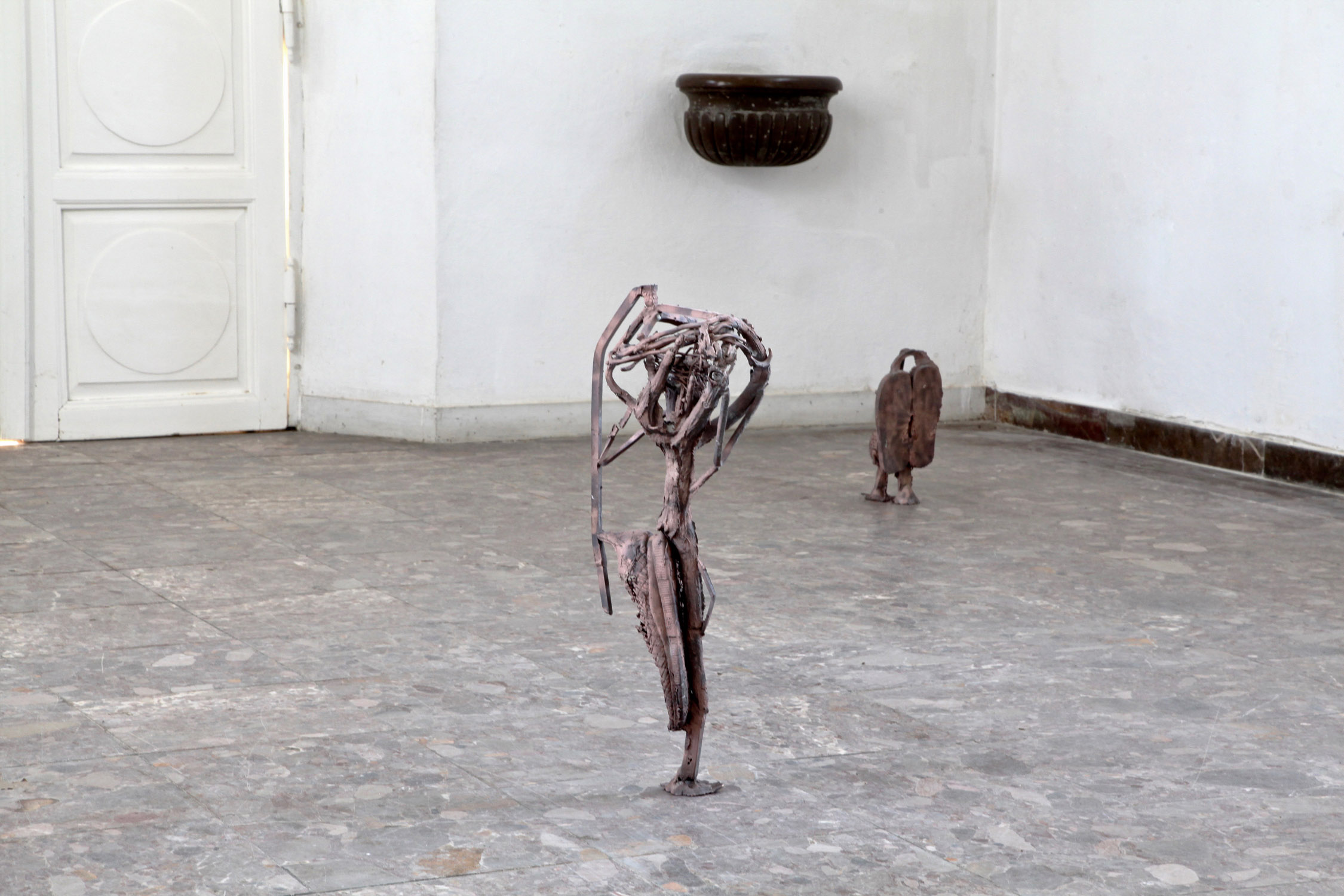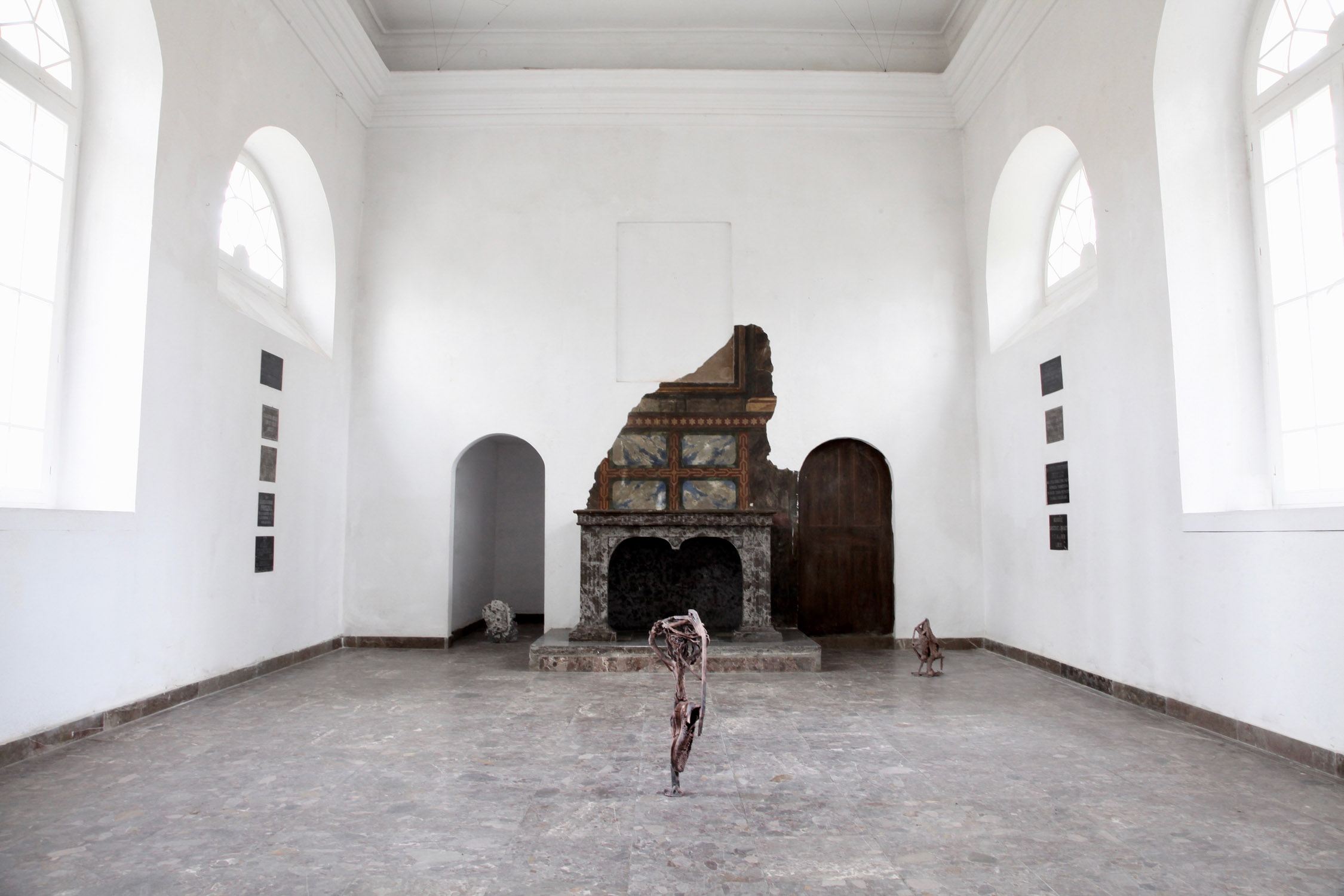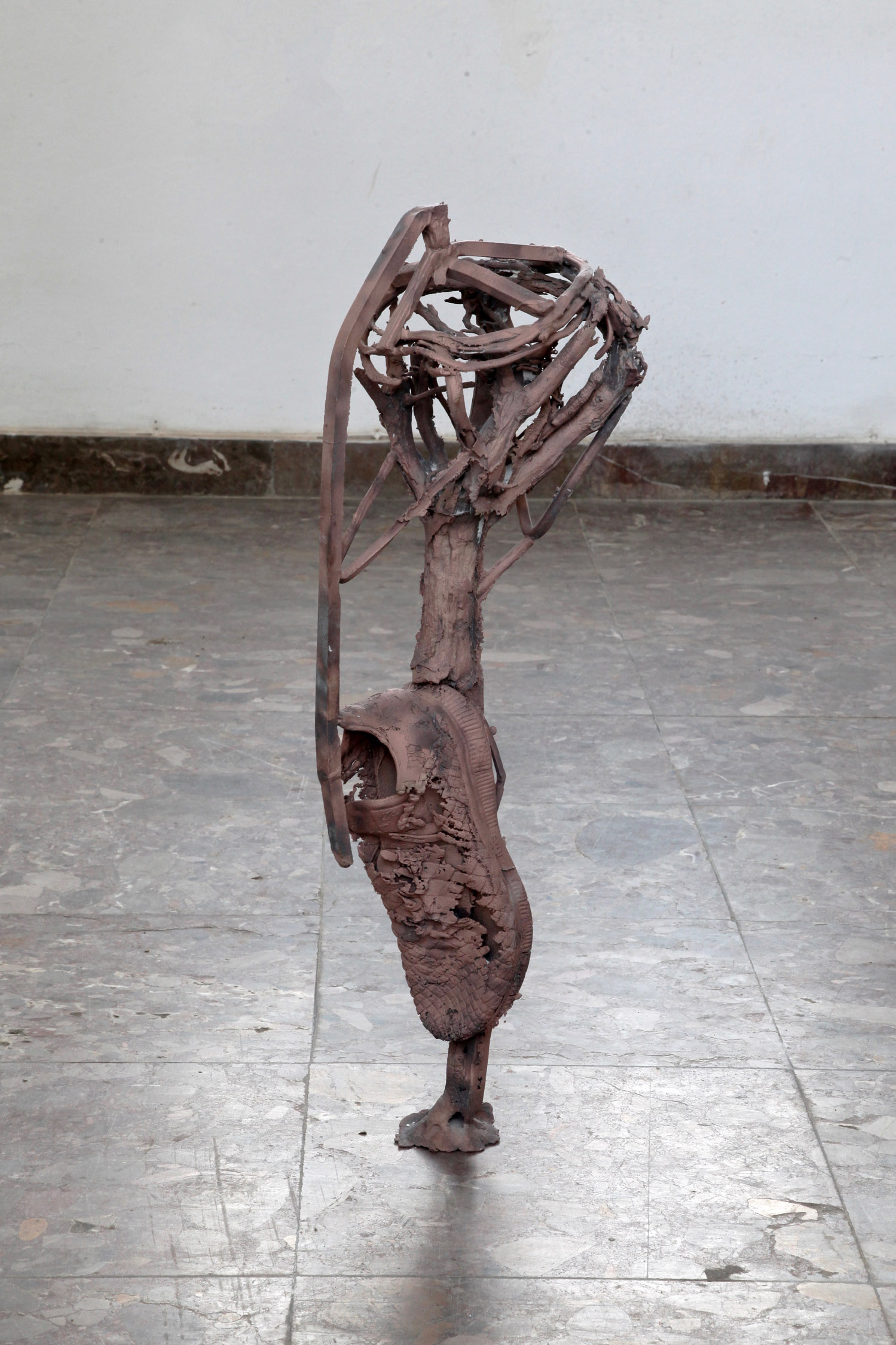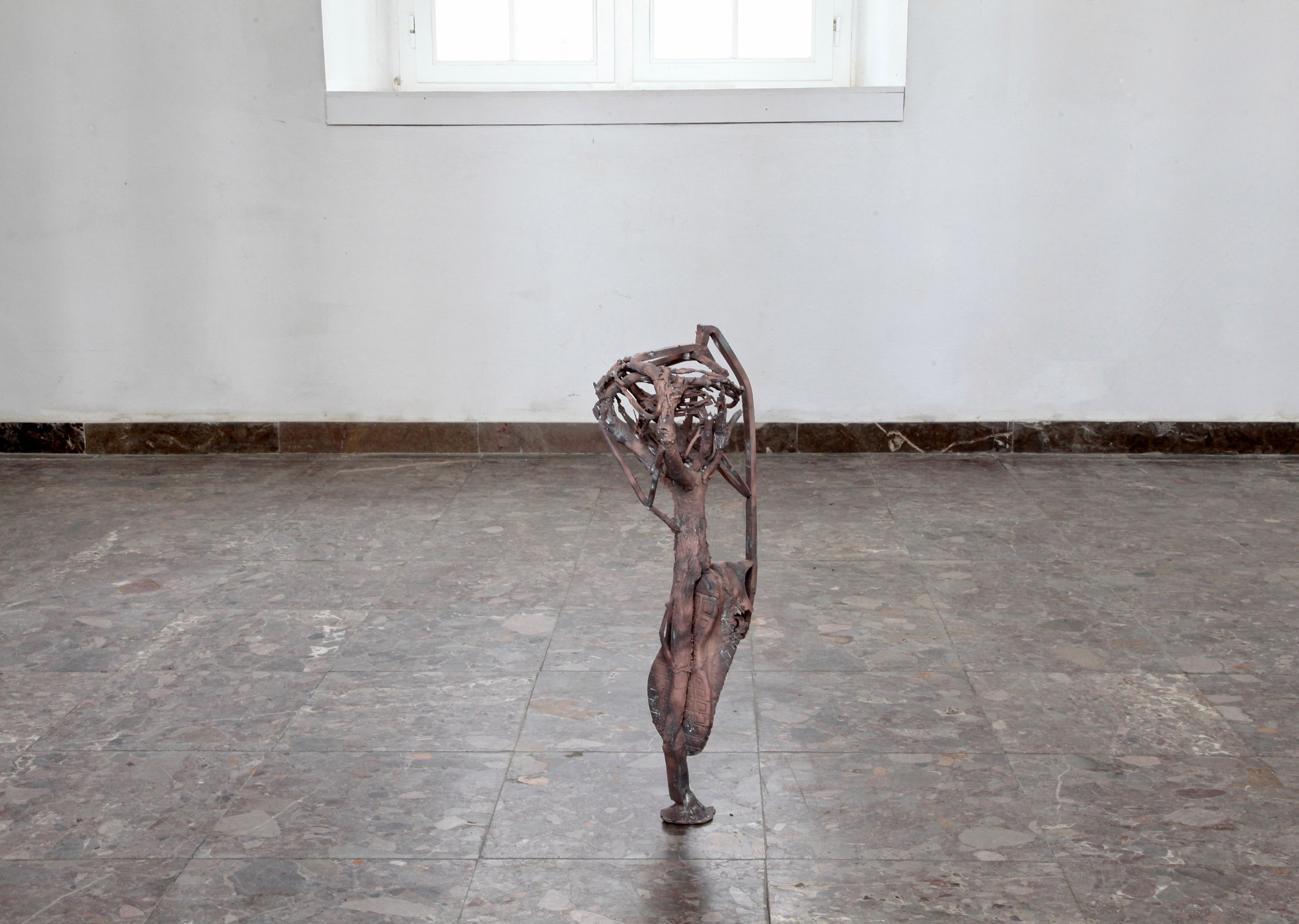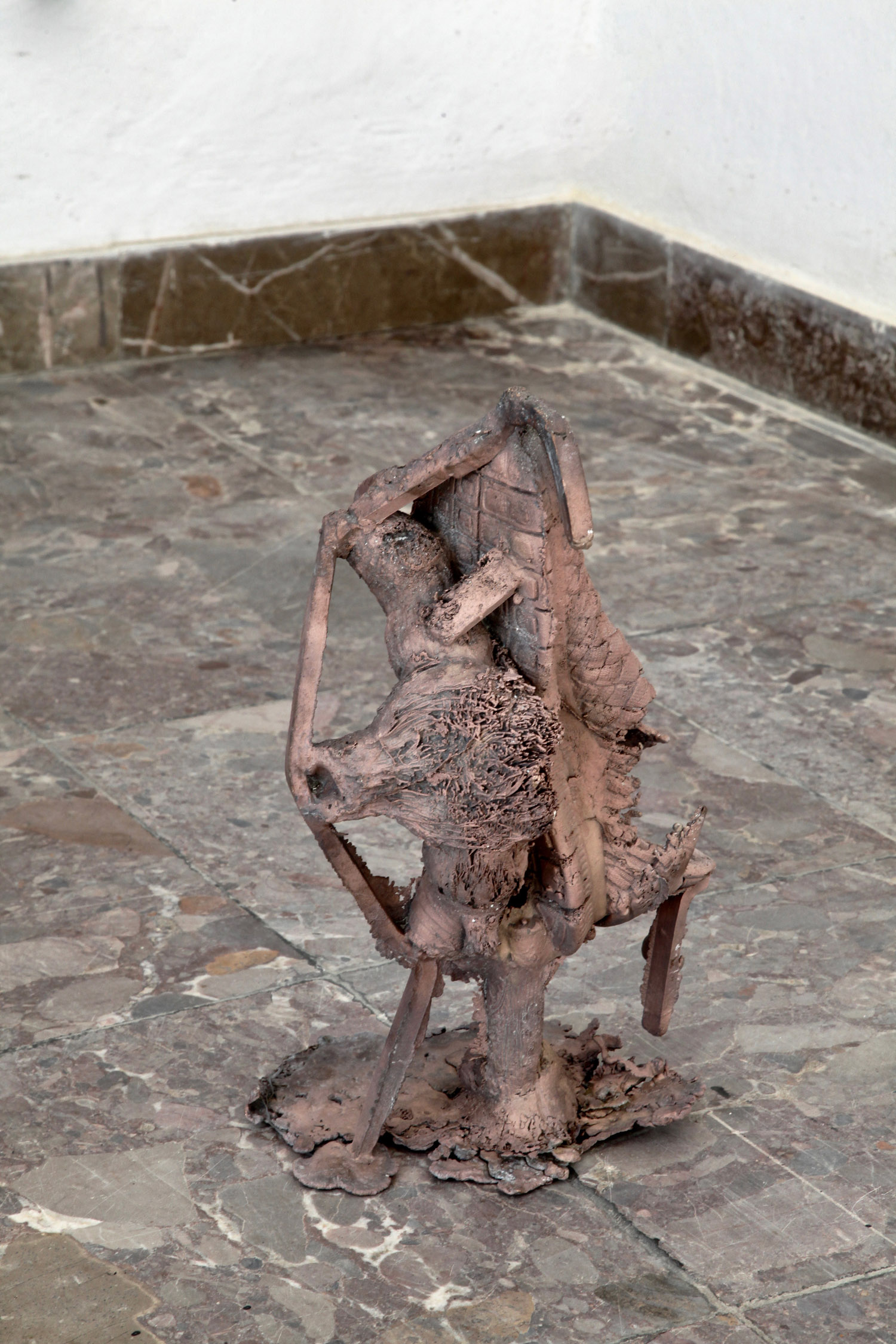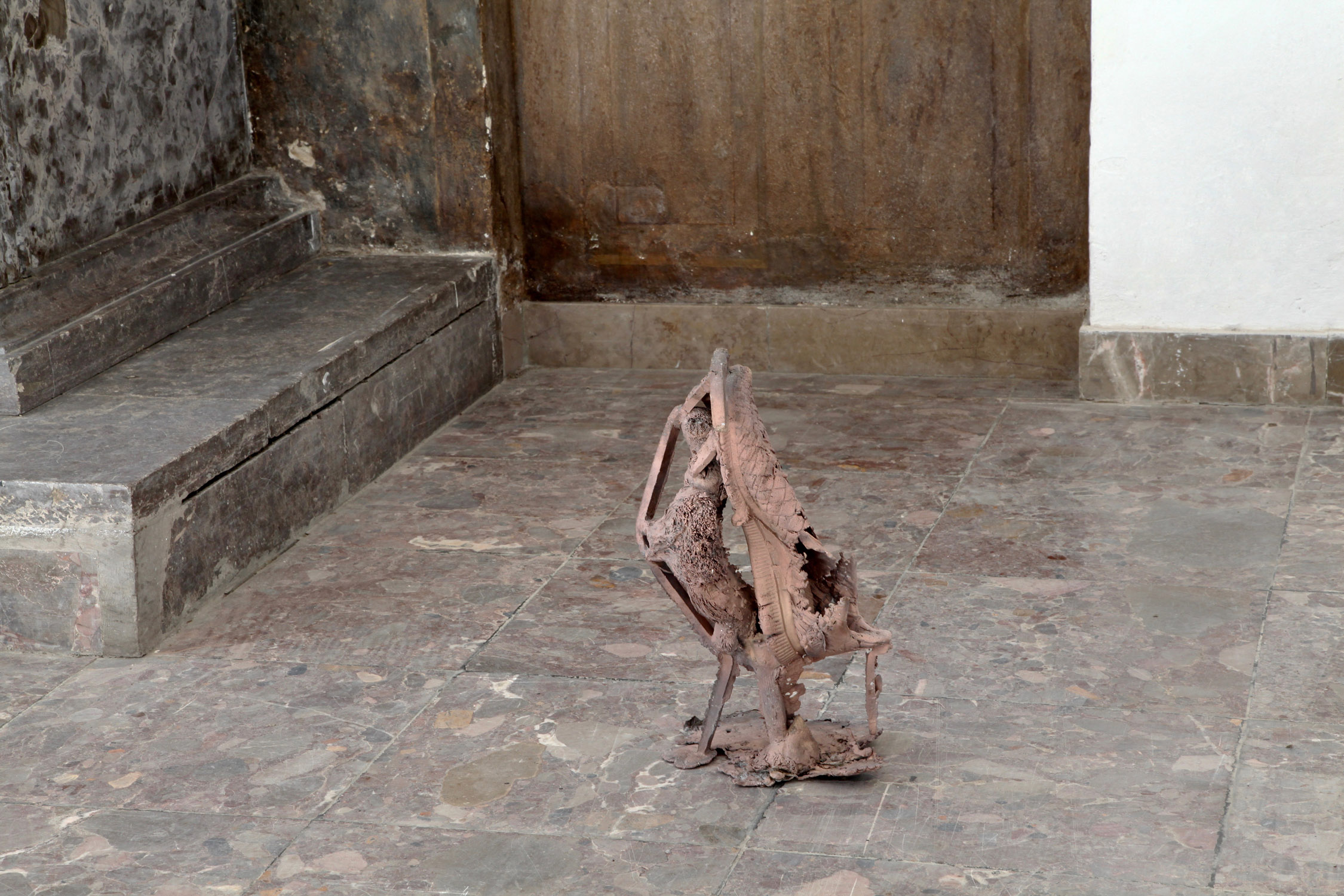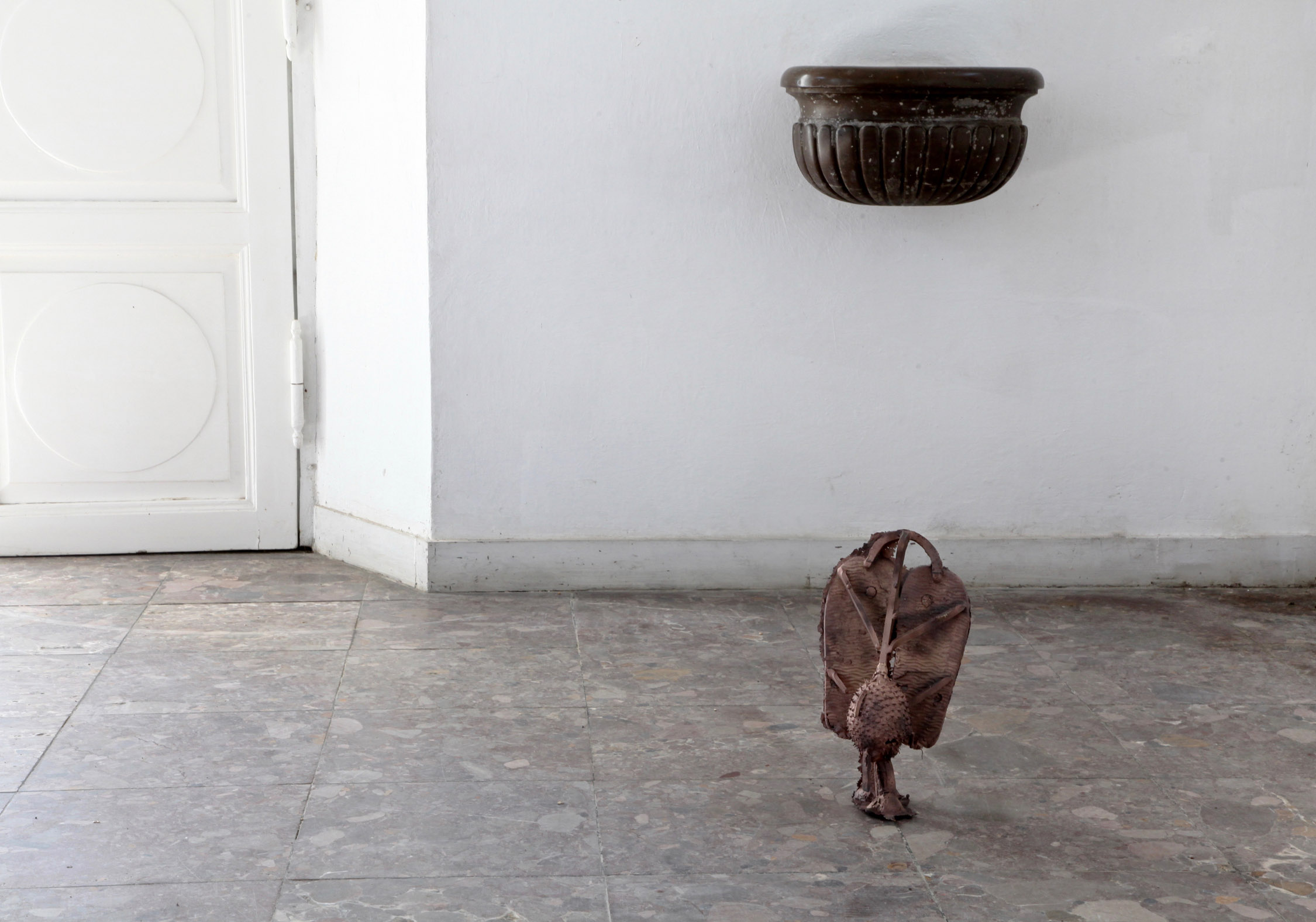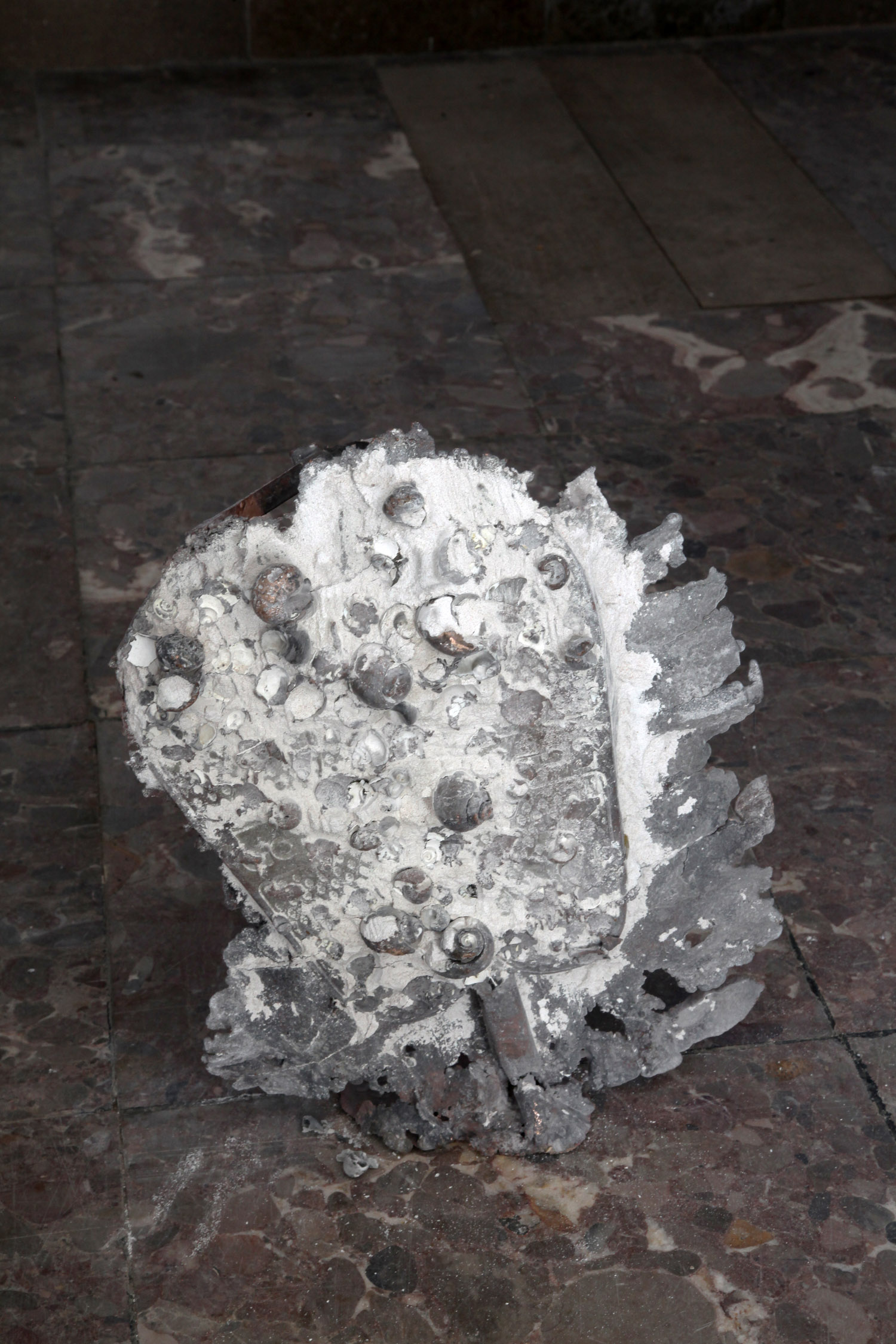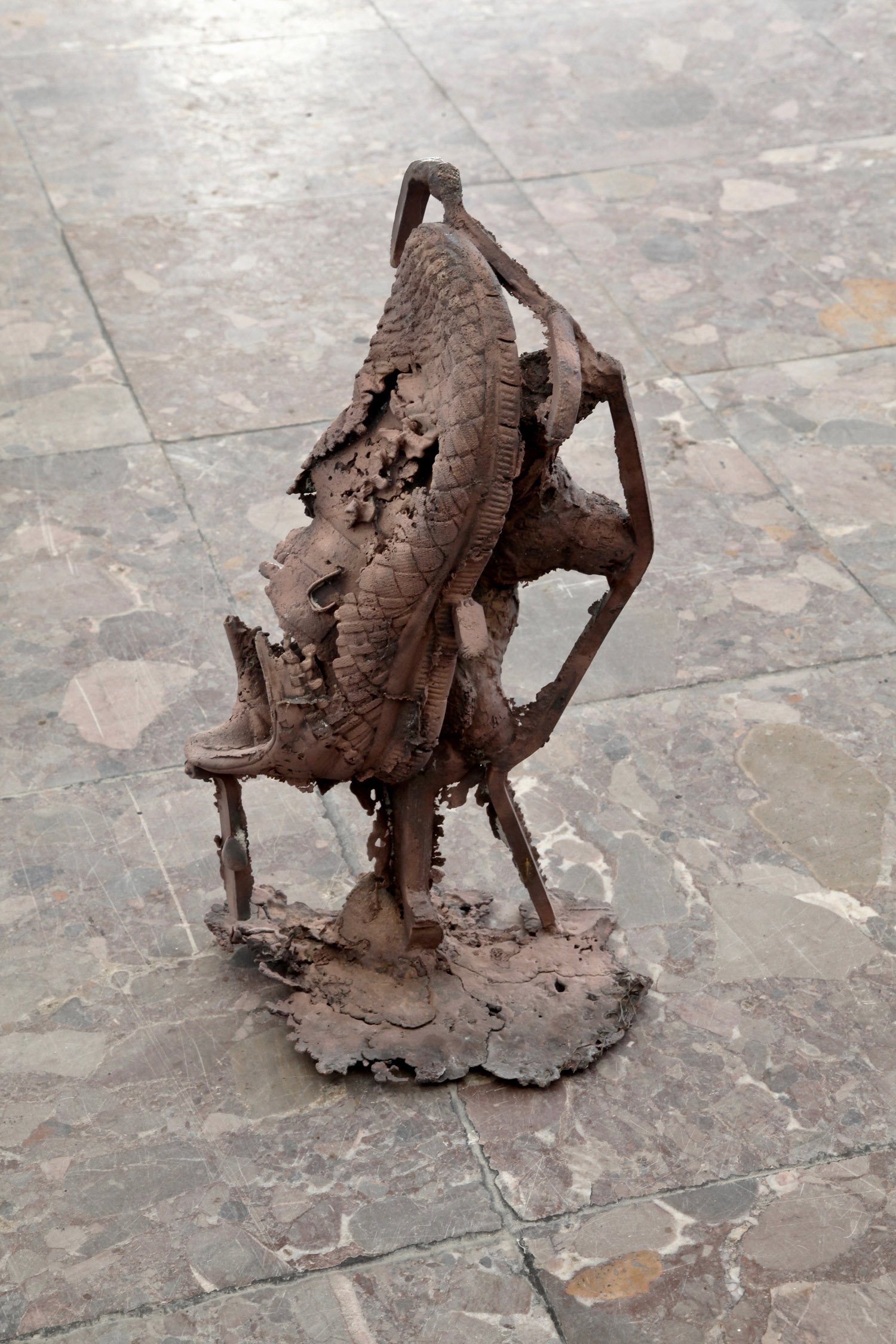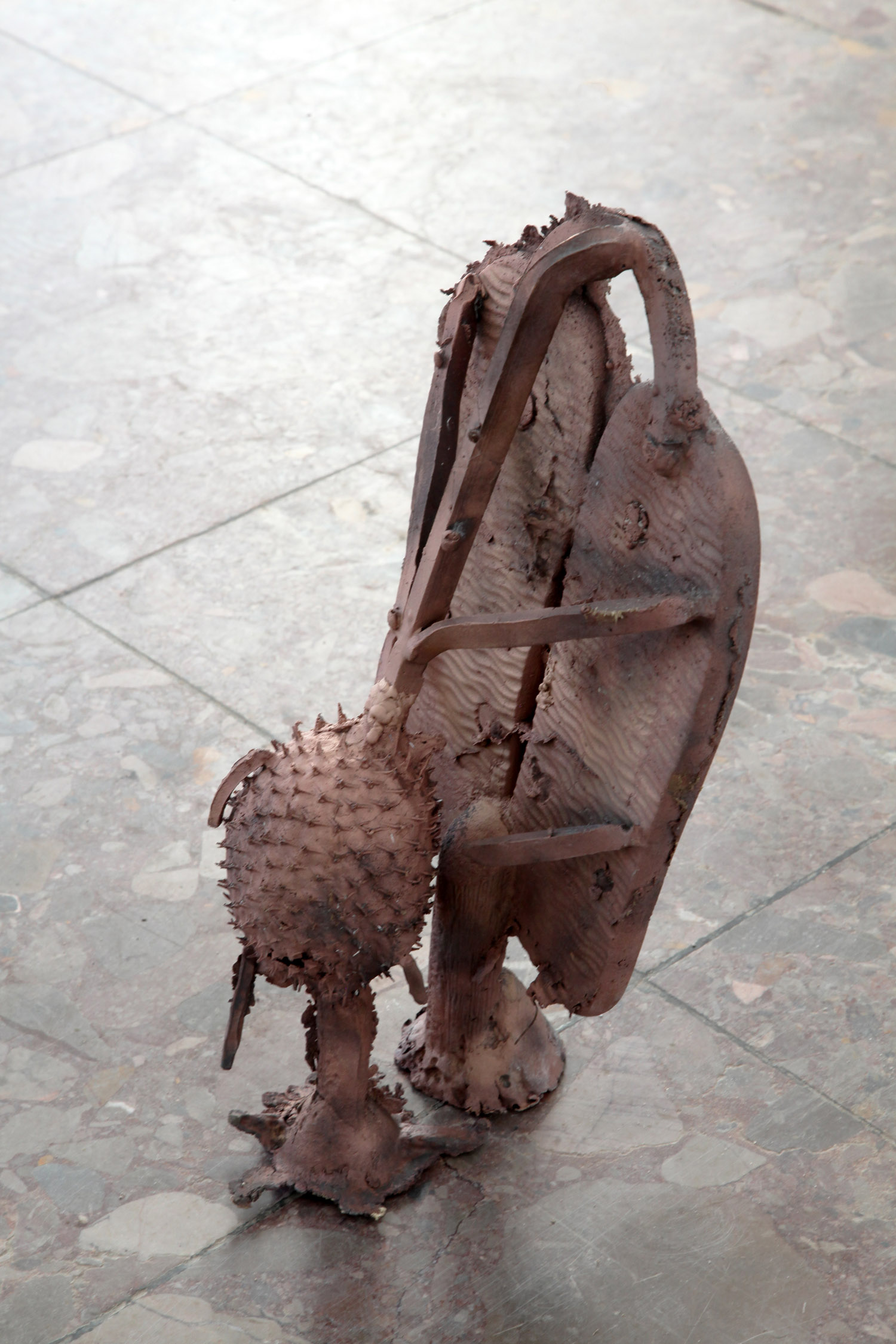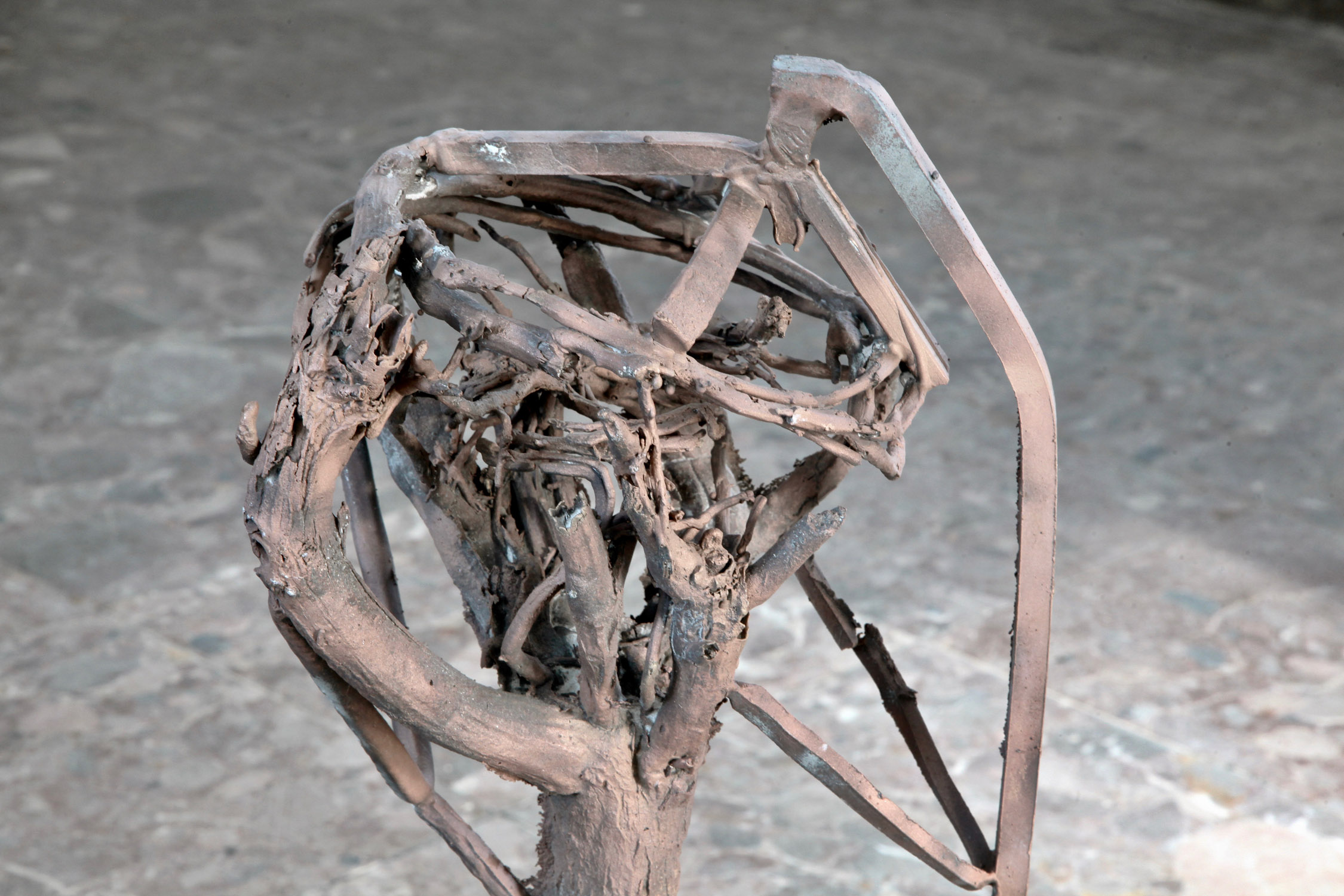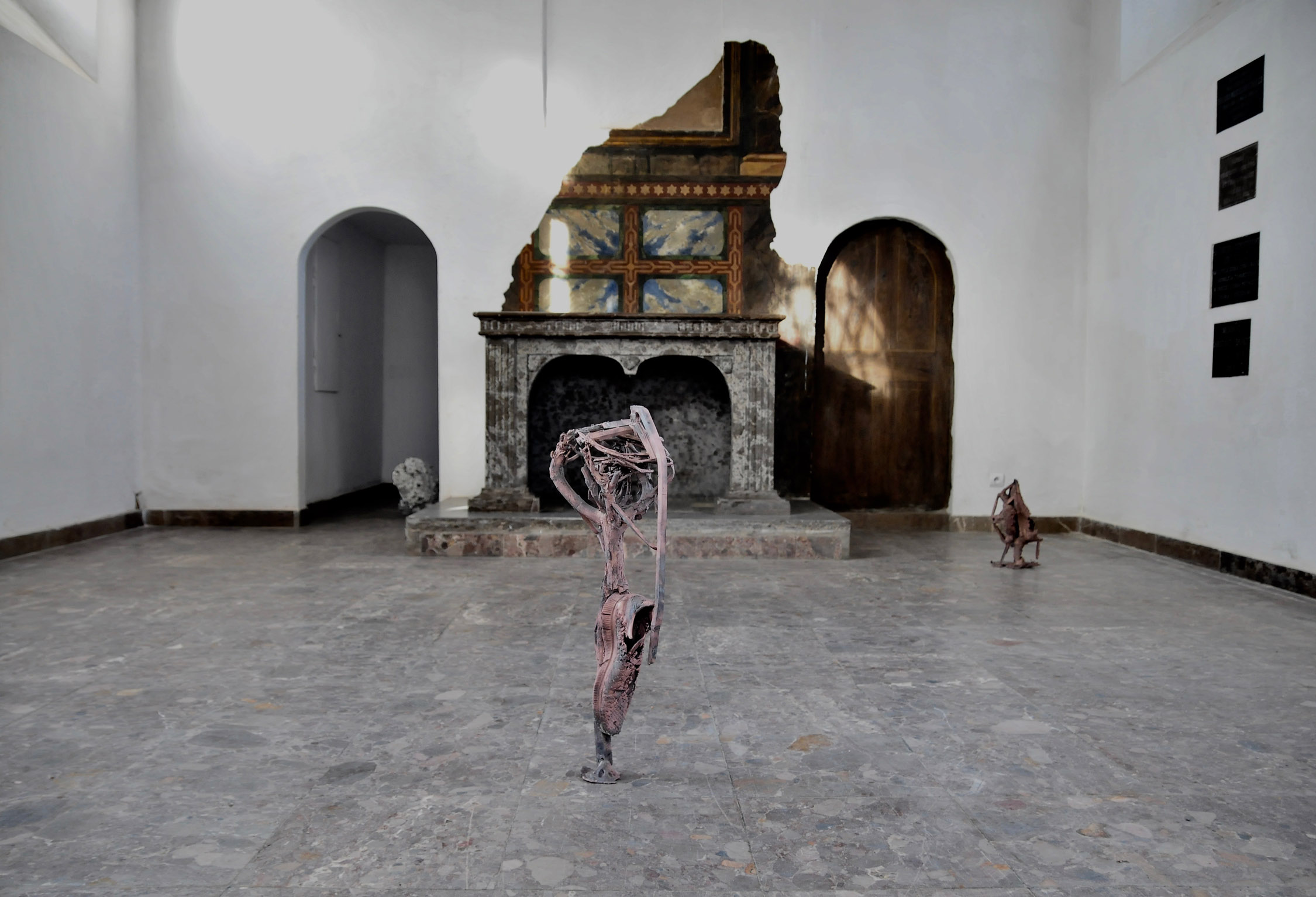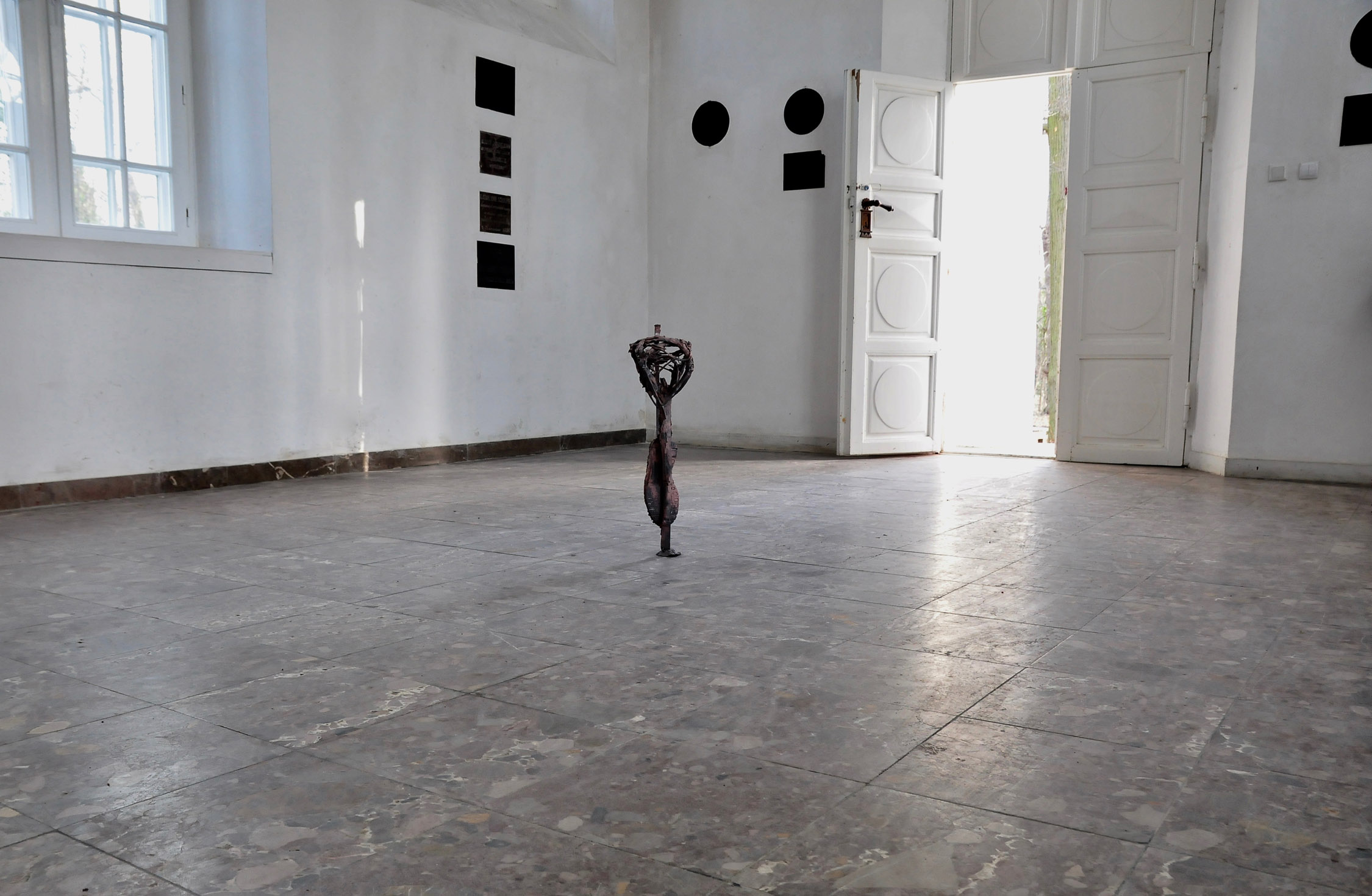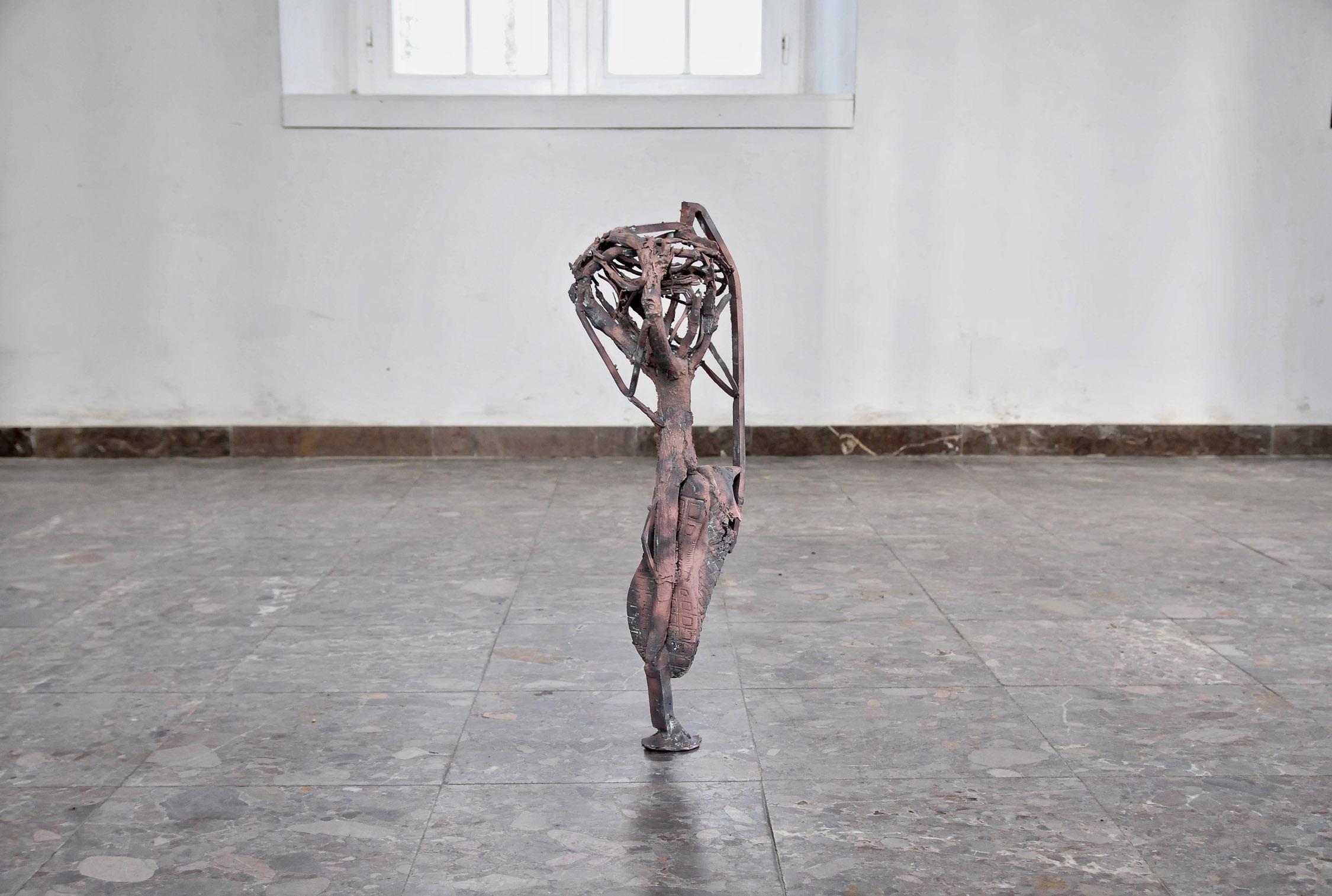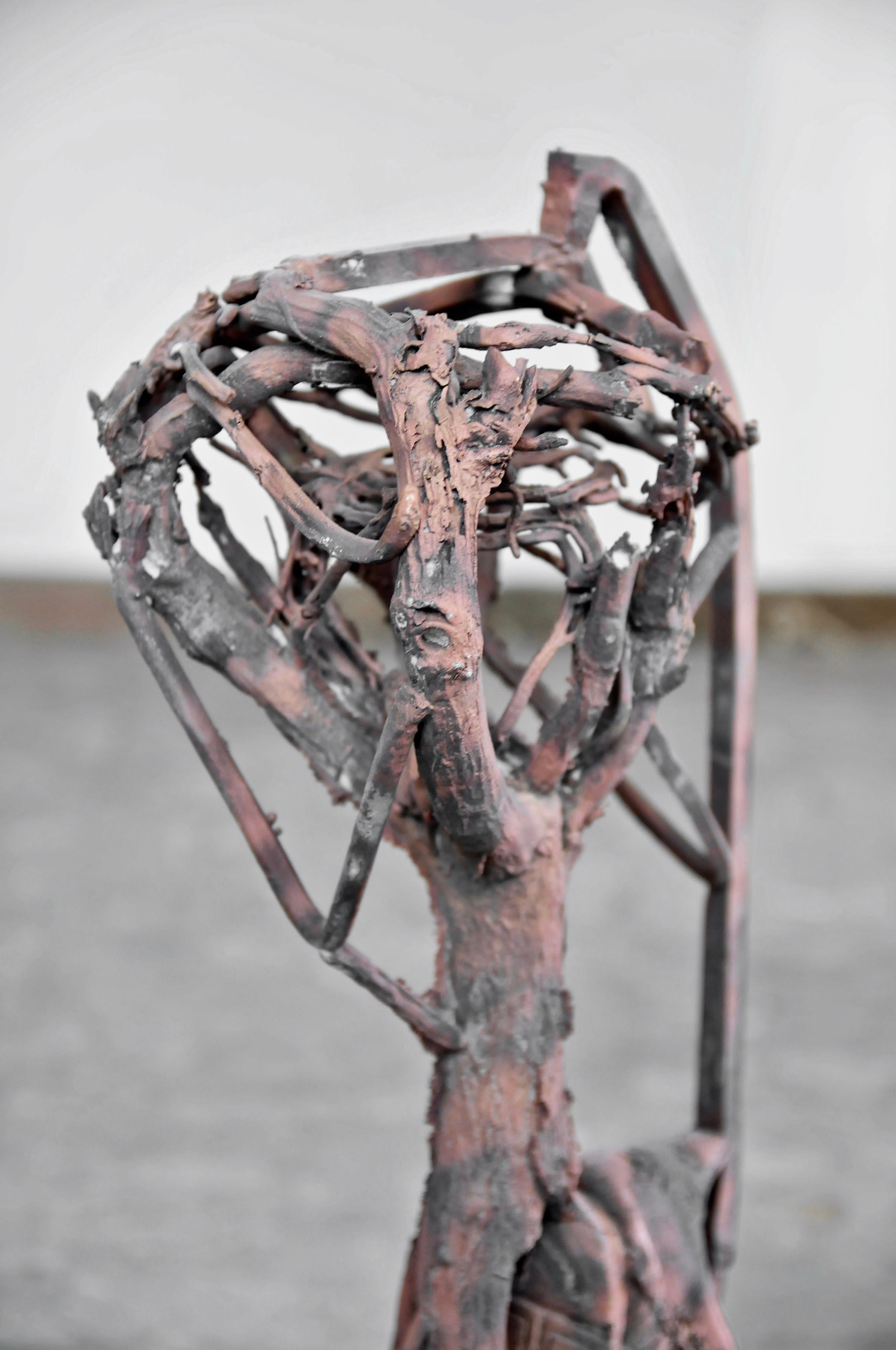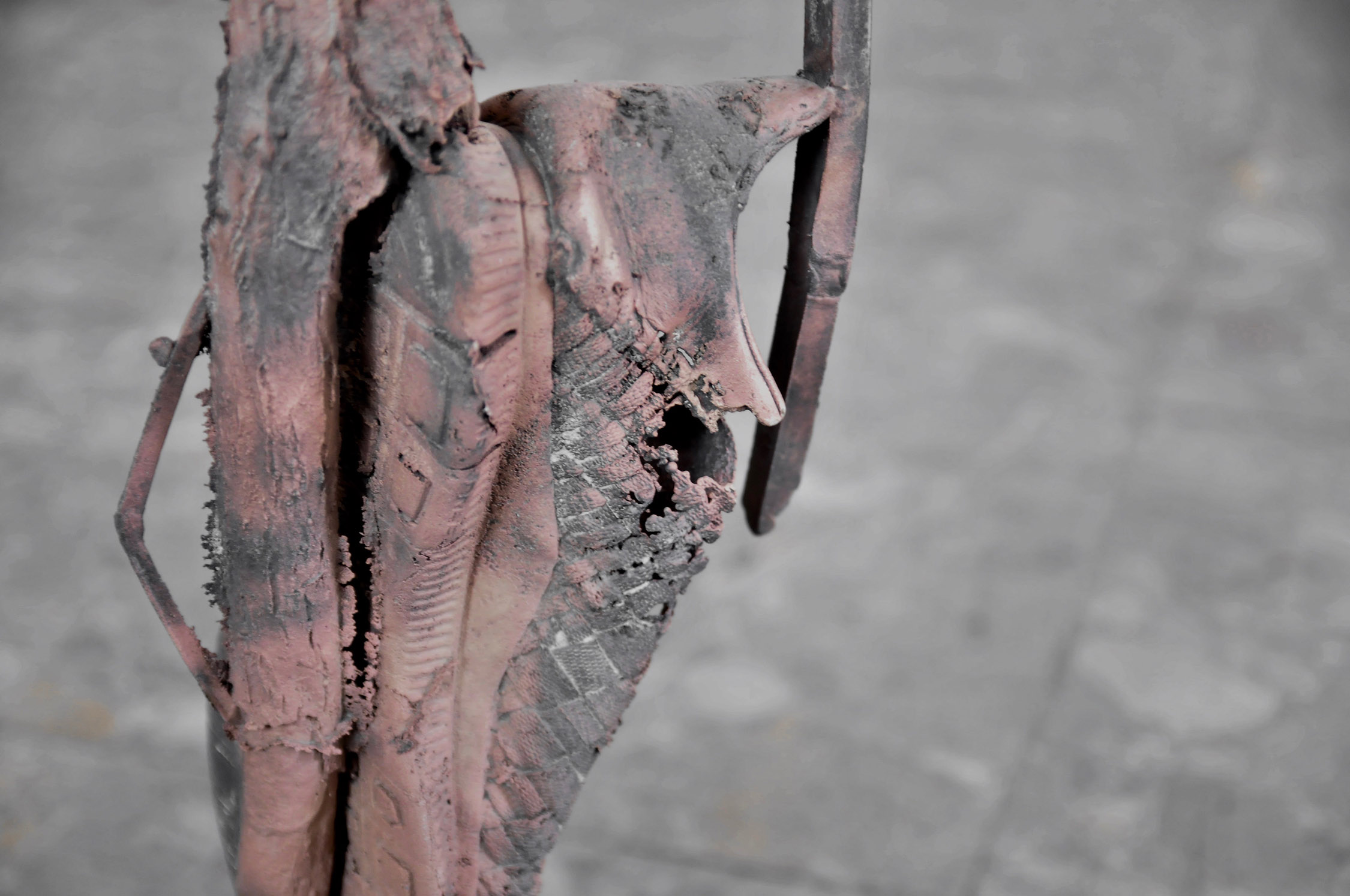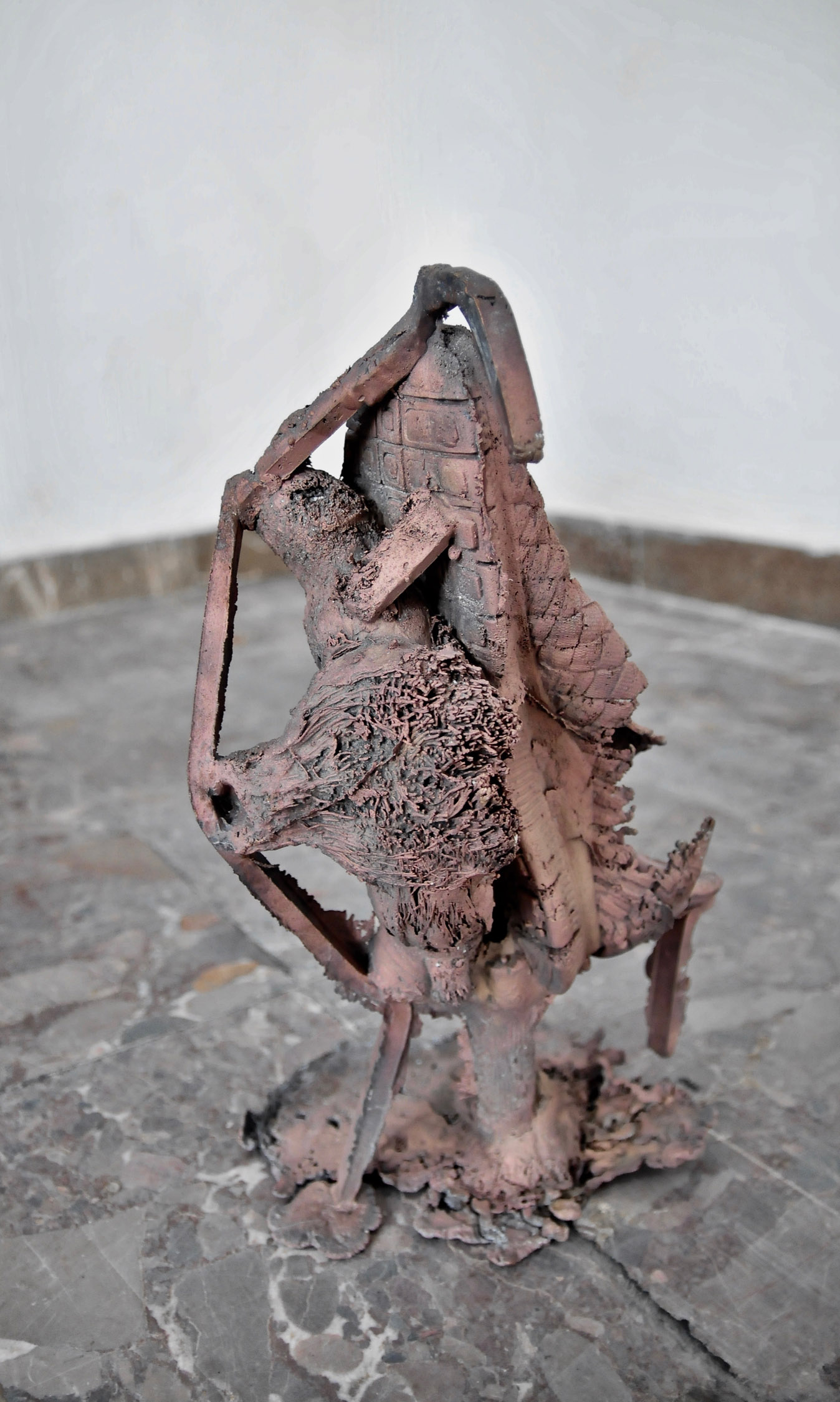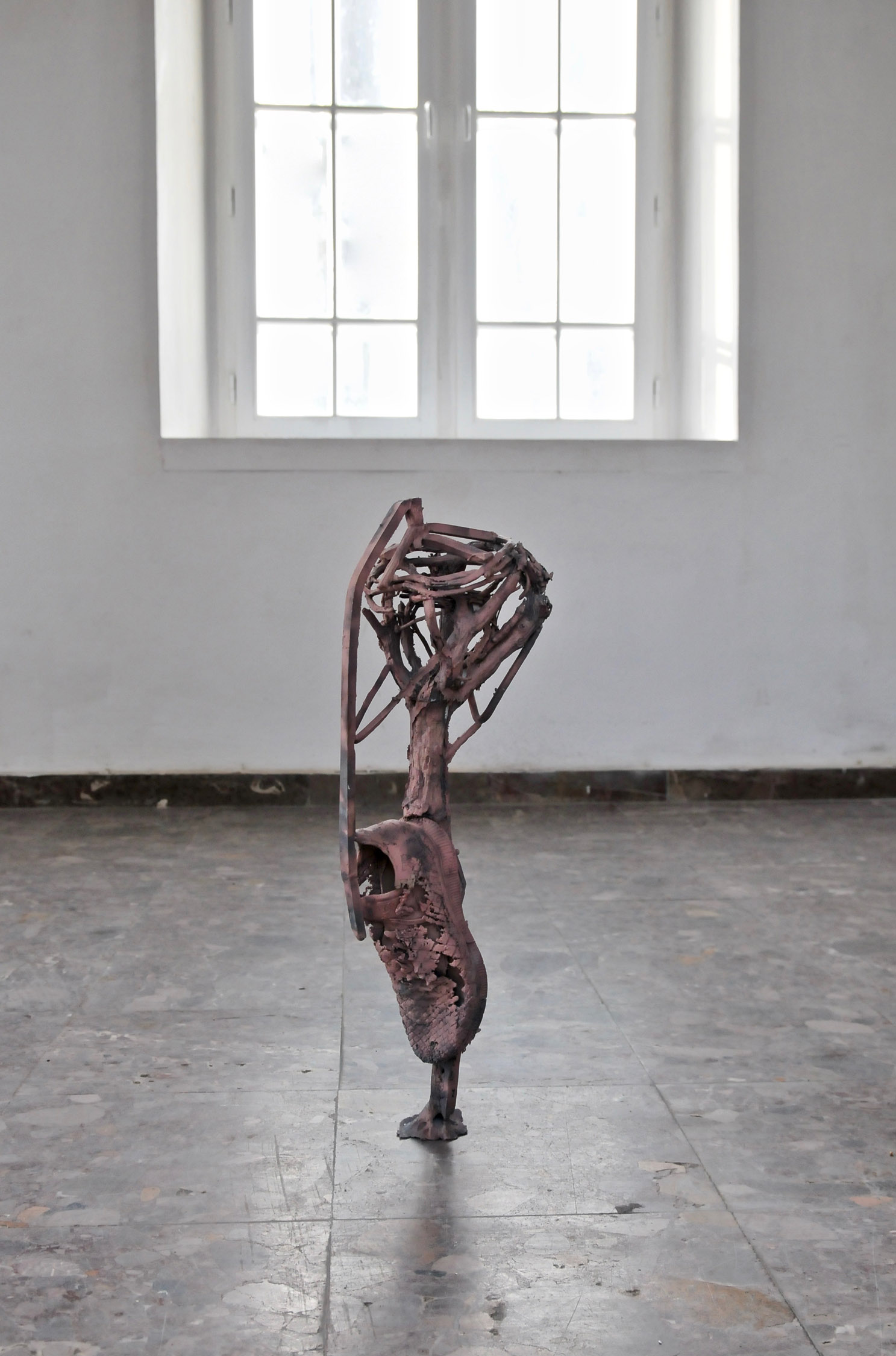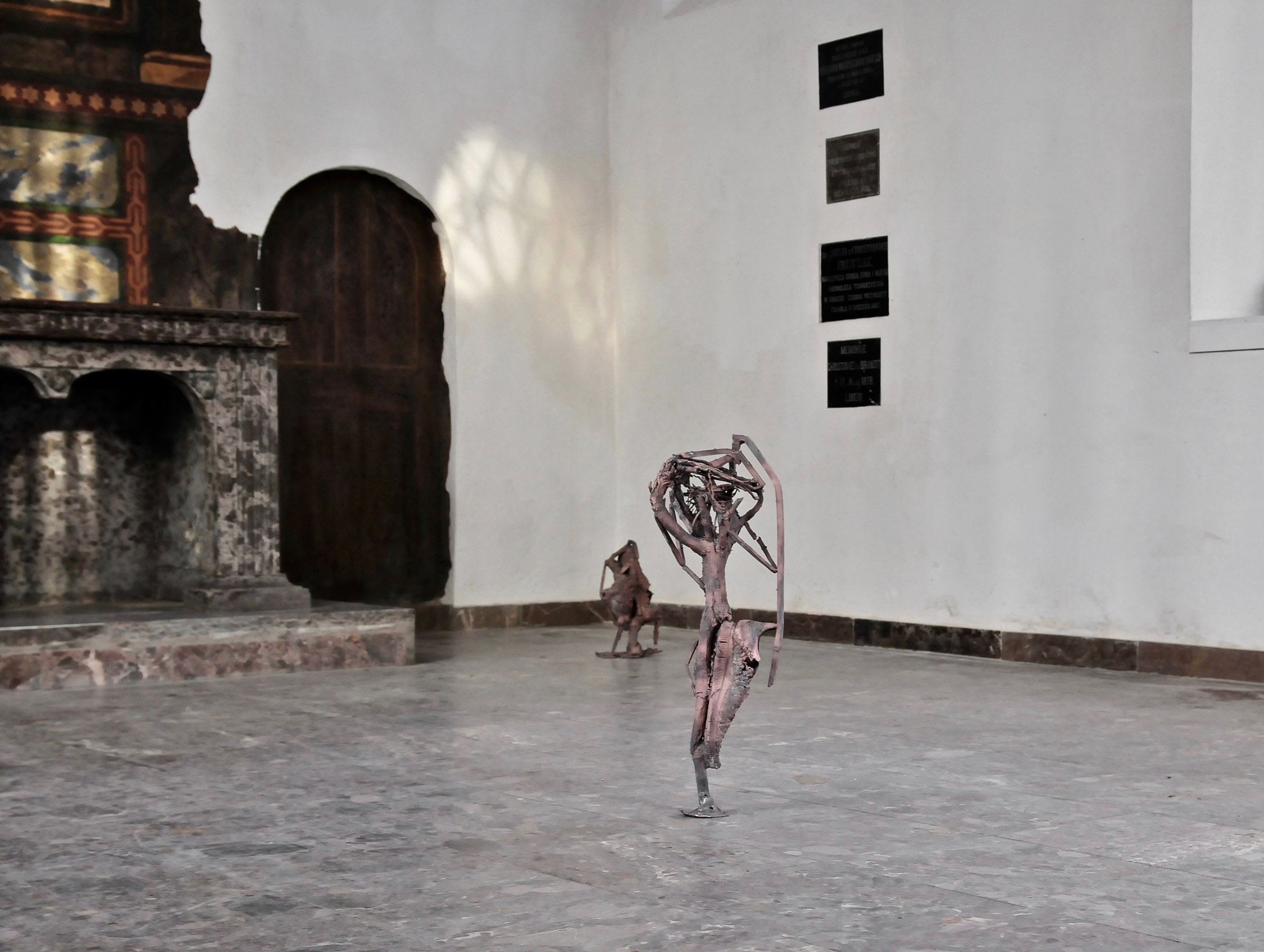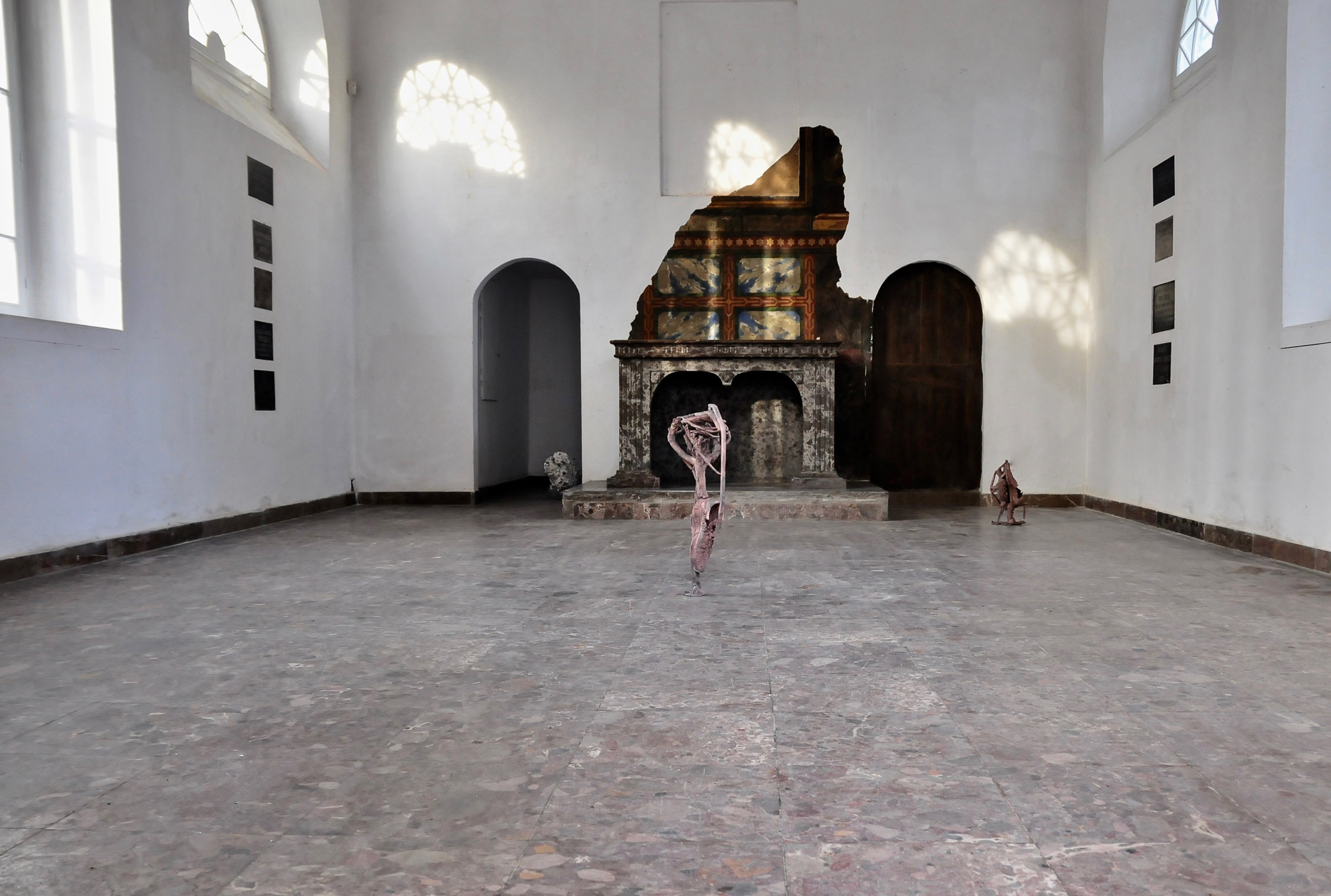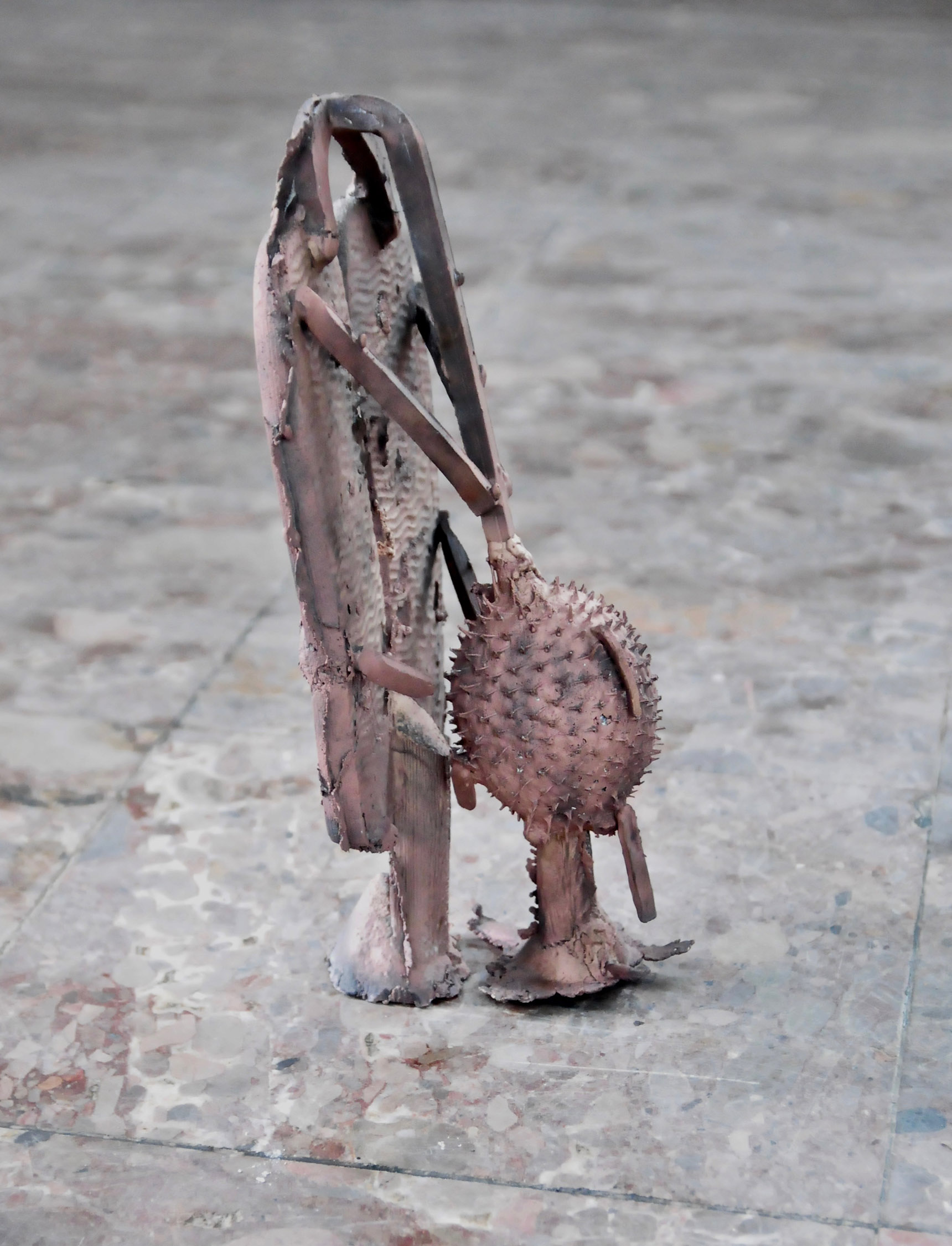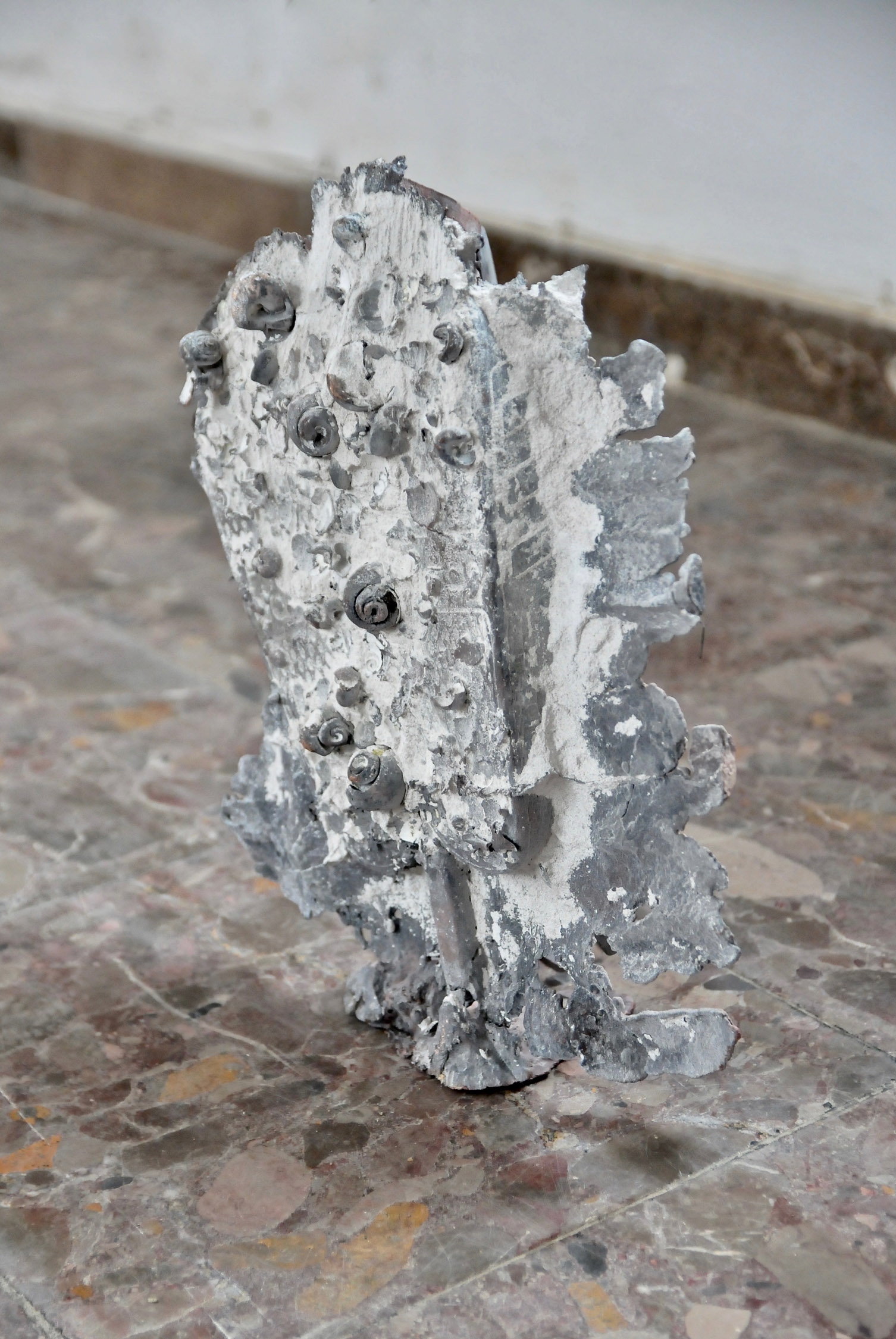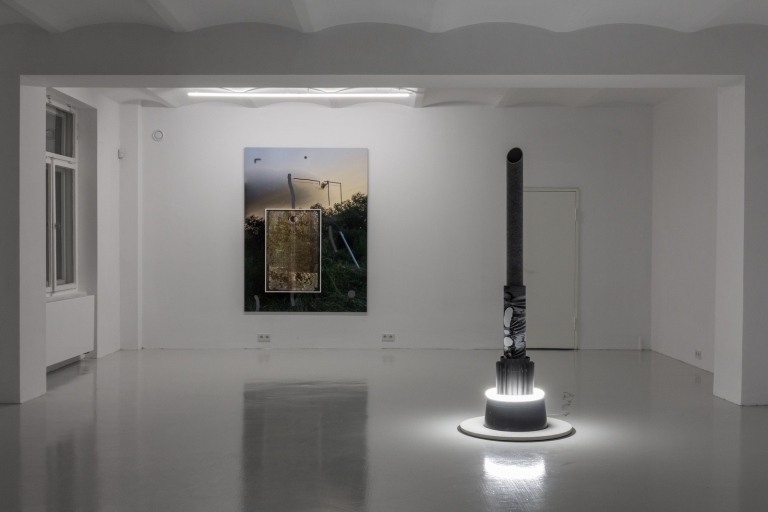Artist: Piotr Skiba
Exhibition title: Snail Gods
Curated by: Leszek Golec
Venue: Centre of Polish Sculpture, Orońsko, Poland
Date: February 3 – May 5, 2024
Photography: all images copyright and courtesy of the artist and Centre of Polish Sculpture
During his study visit to Orońsko, Piotr Skiba focused on the phenomenon of snail reproduction occurring in the Sculpture Park in early summer. During this period, female molluscs laid their eggs in the soil, rock crevices, but also in sculptures. The sculptures gradually overgrew with snail shells, creating their own ecosystem. This gave the impression that they were in complete control of the area, turning the local park facilities into ‘temples for habitation’.
Land snails have accompanied humans since ancient times; the Sumerians and Babylonians considered snails immortal, making them a symbol of eternity. Prehistoric shell heaps, e.g. Sambaqui in Brazil (6000 BC) or Køkkenmødding in Denmark, testify to the number of shells processed by local tribes. The Australian Burarra people, also known as Gidjingali, consider their shell mounds to be sacred sites.
Piotr Skiba made shells, crusts, discarded organic elements become symbolic material for building a microhabitat, a new ecological address for local gastropods. During a morning walk in the Orońsko Sculpture Park, the artist noticed that, at night, the damp ground of the alleys was literally covered with a moving thicket of shells. The artist directly addressed this phenomenon by building in, among other things, the soles of his shoes and swimming flip-flops, elements from discarded, delicate snail shells and other organic remains. Skiba appears to be attempting to reverse a practice similar to preventing living organisms from overgrowing the hulls of ships, creating a situation sacrificed to overgrowth. The objects created in Piotr Skiba’s characteristic technique of casting in bronze resemble in form designed models of small settlements for small creatures, in fact they are literally dedicated to them. It is significant that the organic materials collected were ‘cremated’ by burning in metal, ultimately preserving the memory of the melted biological fragments, which can be related to the ritualistic practices of creating ancient statues. The choice of location for the temporary exhibition, i.e. the Chapel, which is the oldest building located on the premises of the Centre of Polish Sculpture, is by no means accidental.


